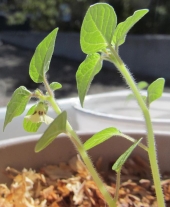It's not that bad. In hindsight it seems obvious, and now I'm not sure what I expected. There were blue jays watching me plant the seedlings... I basically laid out a little snack bar for them. :)
I have six sunflower and six fava bean seedlings that I didn't plant out and I've transplanted them to gallon containers to get bigger. I'll probably build a "plant terrarium" and grow crops in that to have something to show for the effort, and then also grow things that can harmonize with the local ecology.
I have high hopes for the Maximilian sunflower. It's from the Great Plains, but if it likes conditions out here by the beach... It grows tons of flowers each with tons of little seeds, so that's great for the pollinators and birds, and you harvest the tubers like Jerusalem artichokes (aka sunchokes). (Hmm, the gophers might eat those. We might get a church cat, but then the coyotes will eat it. Hmm.)
(The thing about the gophers is they're the ones keeping the soil from becoming compacted. They run through there like giant worms, fluffing up the soil like pillows. Every time I have to step off of the little paths I've made the ground compacts an inch or two. (So I try to avoid that.) It's the gophers that make it, uh, expanded.)
I just started learning about "air pruning" and it seems great. I found this video about making your own grow bags, and I've been doing that. I'm pretty excited all over again.
"How To Make Your Own Grow Bags"
I'd rather be making a food forest integrated with the local ecosystem, but that's a huge multi-year project (that I'm not qualified to design).











